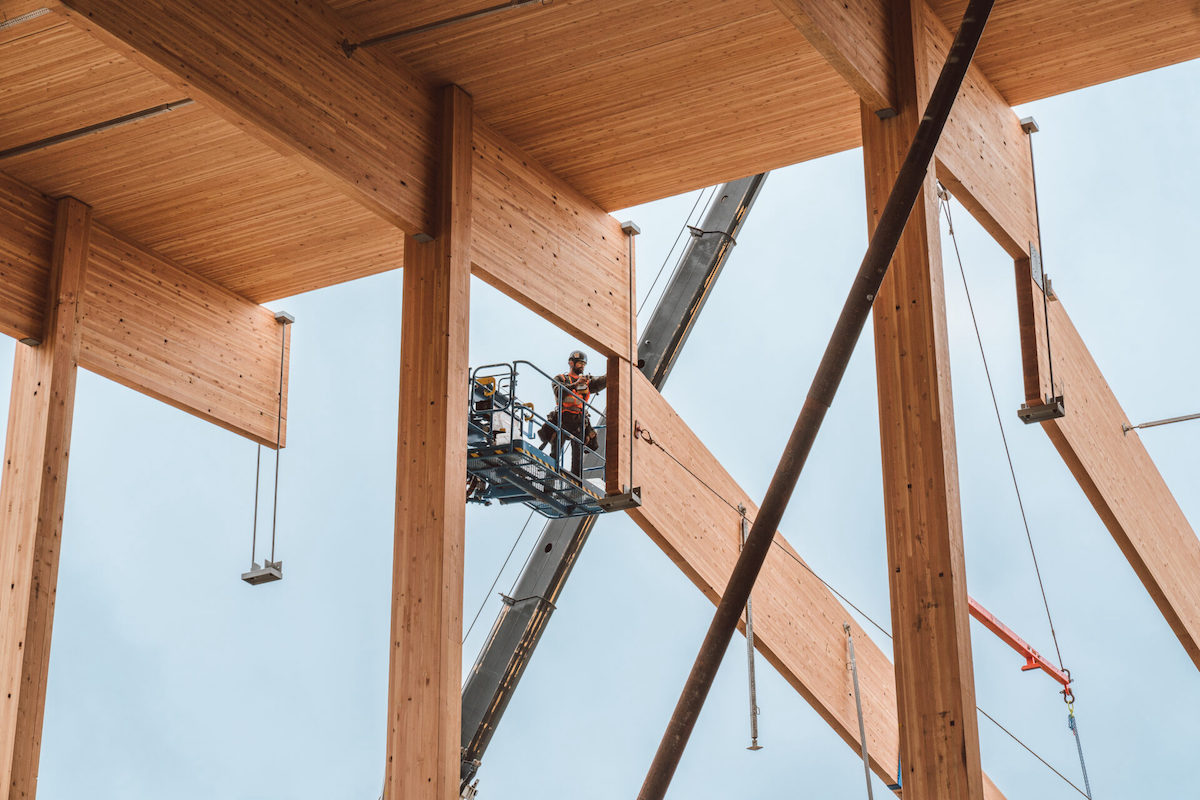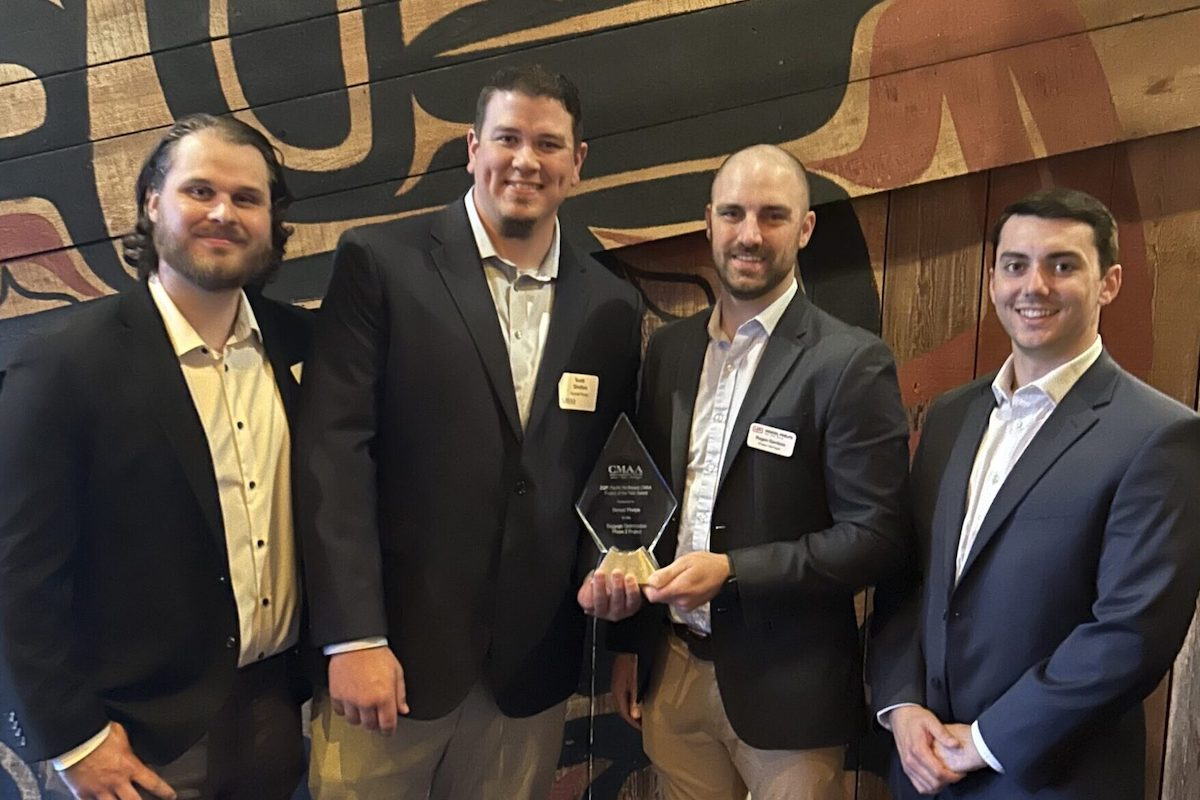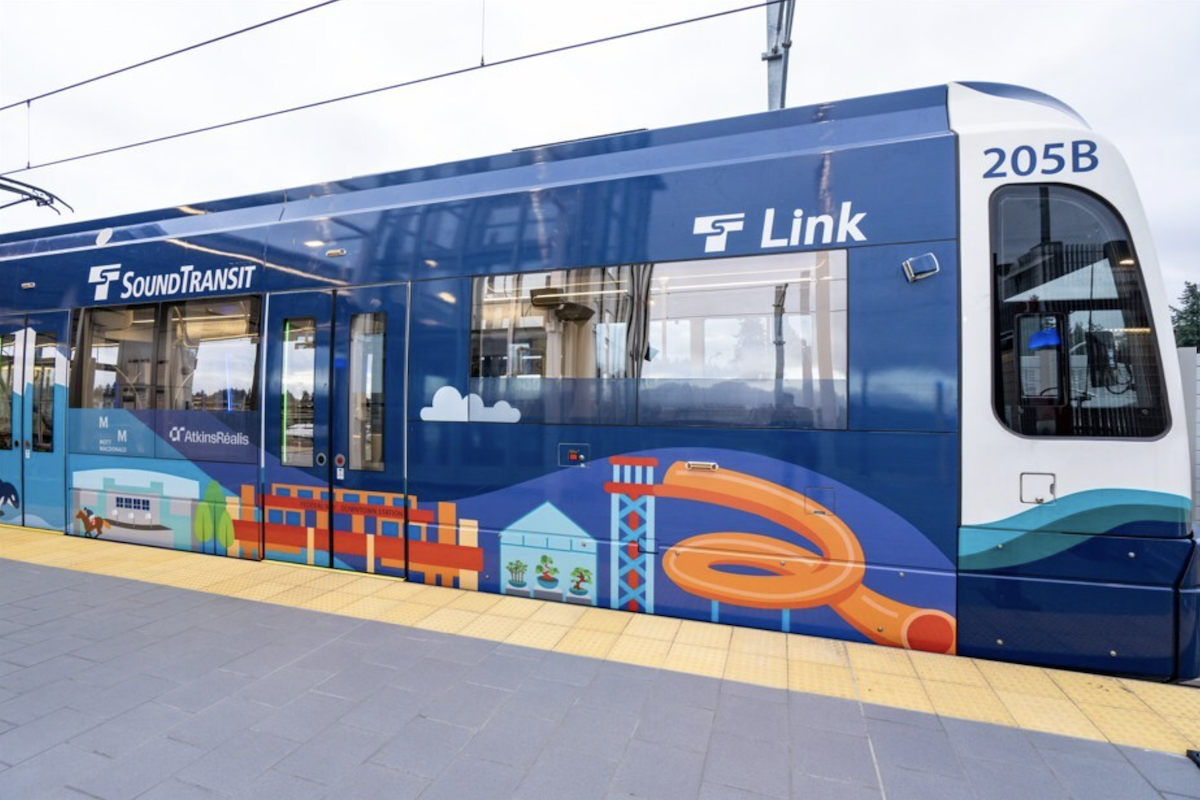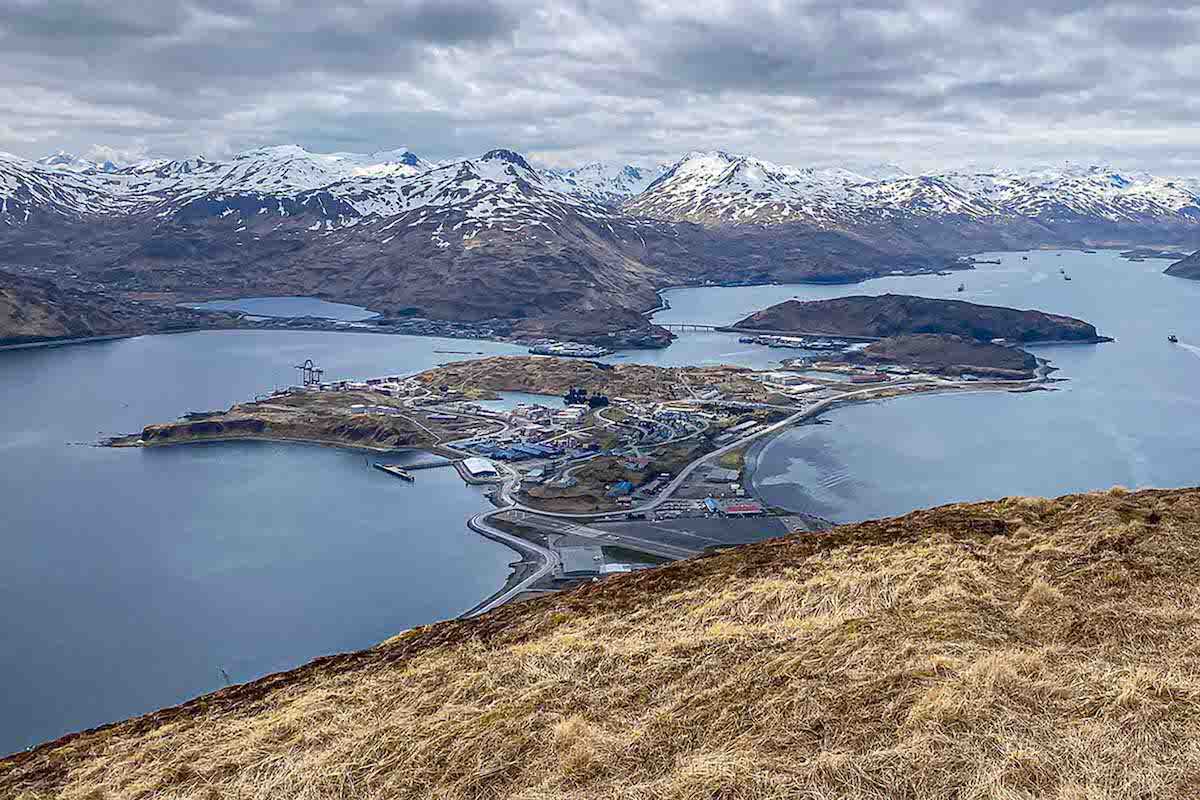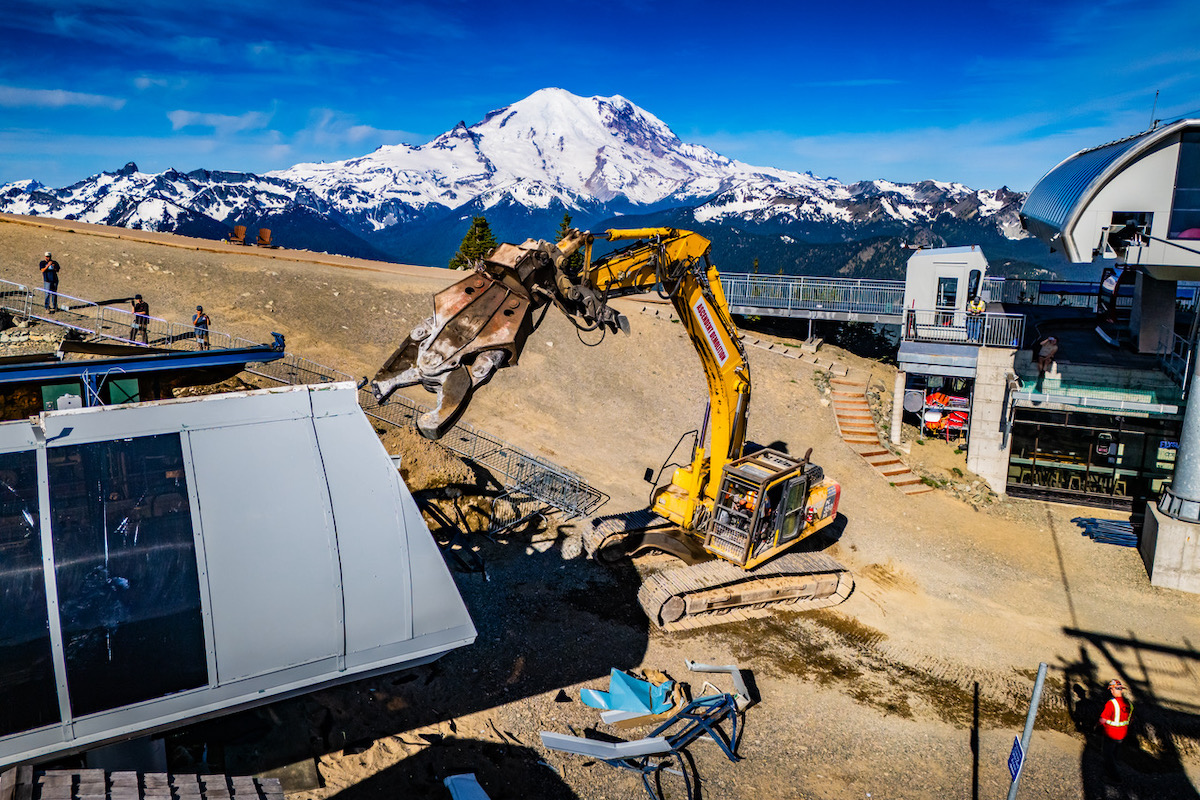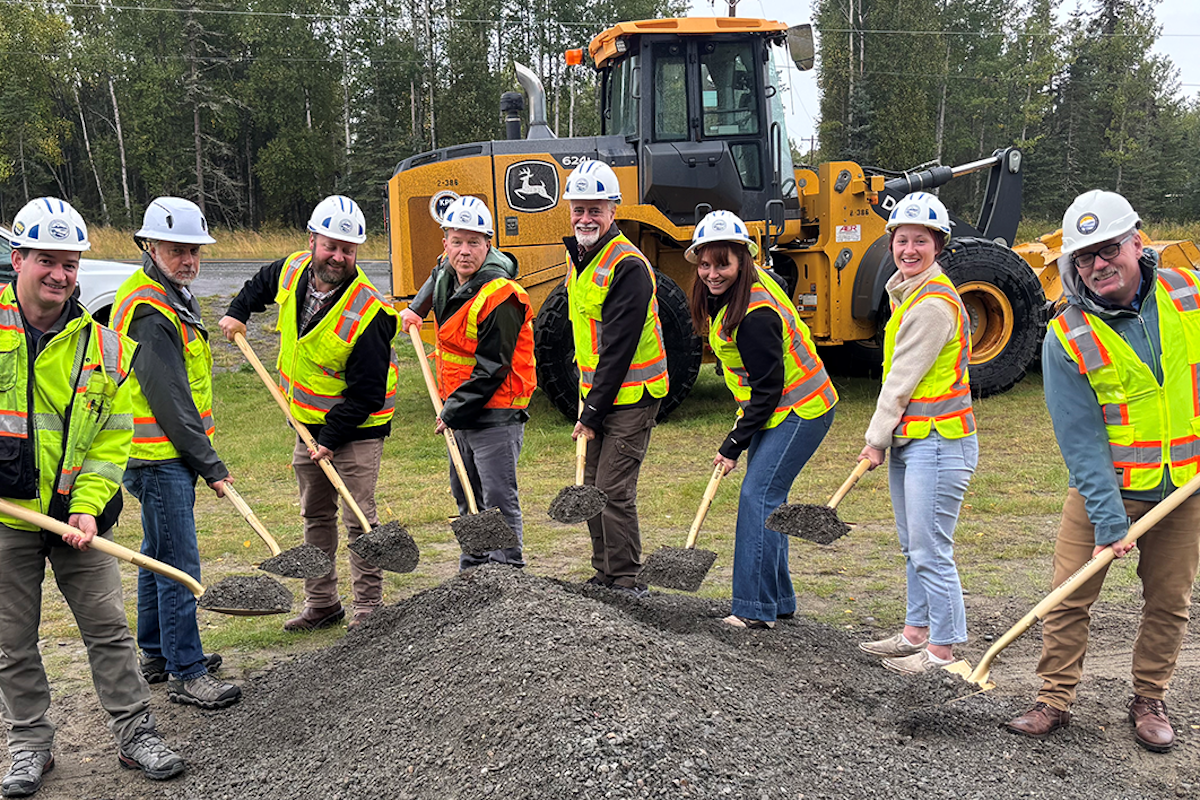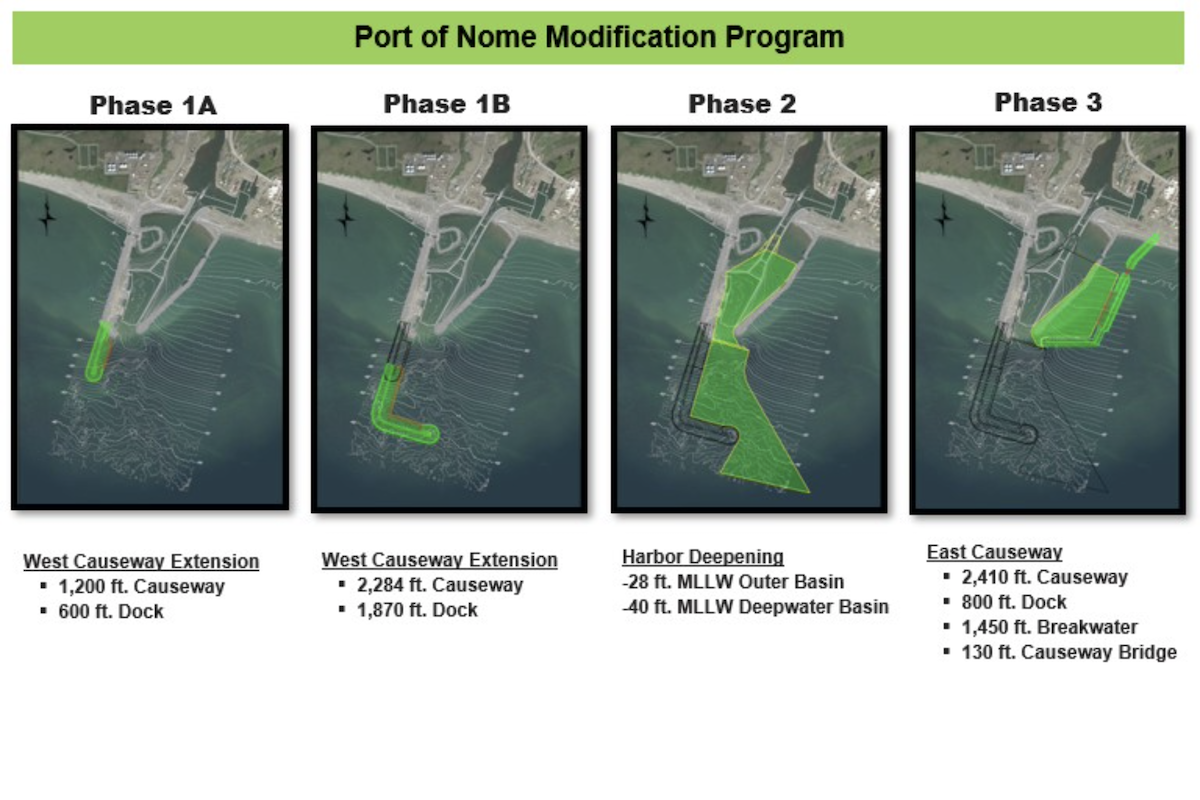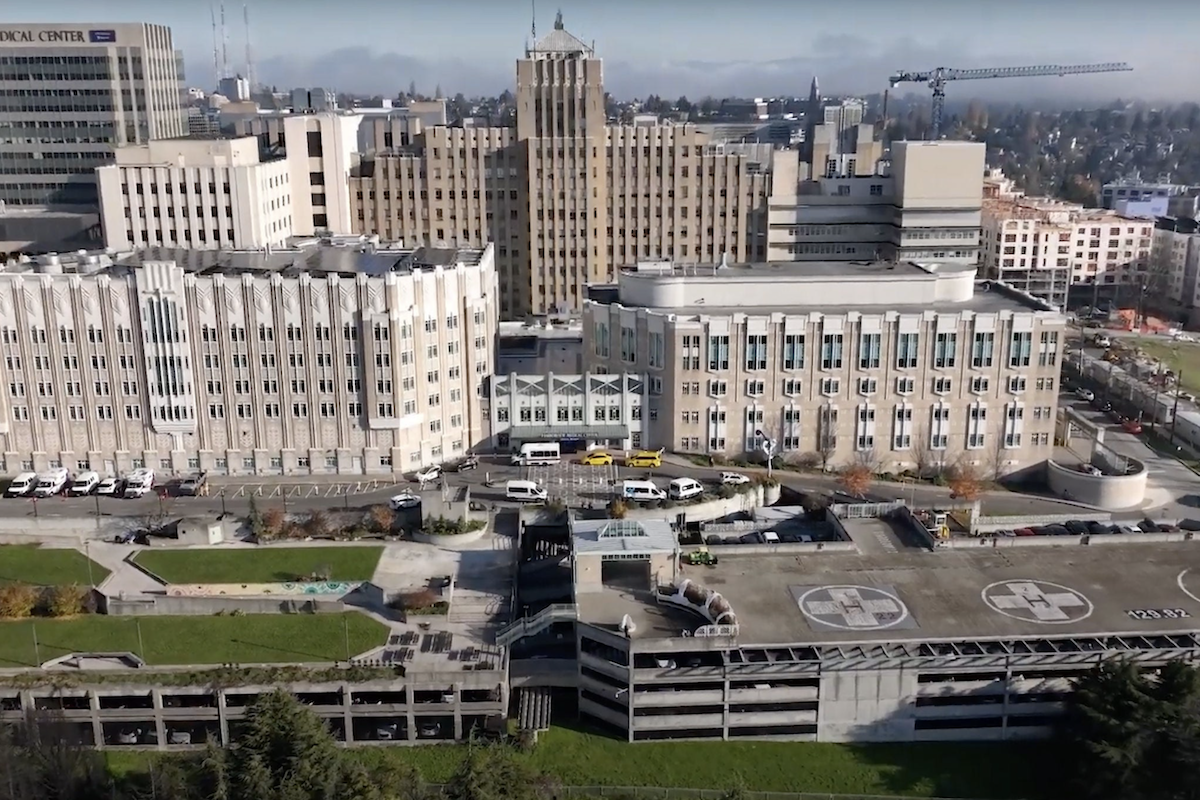The $33 million, two-and-a-half-year project replaced the Racine Street bridge over the Menasha Channel of the Fox River. In addition to removing the existing 70-year-old structure and building a new, two-lane bascule bridge on a slightly different alignment, the work included new roundabouts at intersections on both sides of the river.
Federal and state funding covered construction, with local funding for aesthetic improvements. Lunda started work in October 2020 and finished in April 2023.
With the roundabouts and bridge improvements, the Wisconsin Department of Transportation (WisDOT) designed the project to increase safety and traffic flow between downtown Menasha and the developing Doty Island. The new bridge includes wider mainlanes and shoulders; 5-foot-wide, dedicated bicycle lanes; and 6-foot-wide sidewalks protected by concrete barriers.
Those features sit atop six spans of varying sizes. Lunda built the five fixed bridge spans with concrete prestressed girders and concrete deck. On the south side, three 157-foot-long spans connect to a 137-foot-long span on slightly skewed piers. Next to that, a 36-foot-long auxiliary flat slab span provides a few feet of higher clearance for smaller boats.

| Your local Metso Minerals Industries Inc dealer |
|---|
| PacWest Machinery |
| Westate Machinery Co |
On the north side of the auxiliary span, the 171.5-foot-long lift span features steel girders.
“A lot of times you see standard steel grid on a lift span, but we partially filled in the steel grid with concrete to minimize noise in the downtown area,” said Bill Bertrand, WisDOT Project Manager.
The new, two-leaf bascule span opens 70 degrees for boat traffic in less than two minutes. Because the auxiliary channel allows more boats to pass under the bridge without opening that lift span, WisDOT expects fewer delays for boaters and less traffic congestion in the downtown area.
First, “Bascule bridges have specialty, one-off components,” said Mike Hahn, Vice President at Lunda. “They’re large and custom-made for each structure.”
Those materials include bearings, couplings, brakes, and the mechanical gears involved in raising and lowering the bridge.
To avoid issues, “We had close reviews with WisDOT and our suppliers on shop drawings and coordinating multiple components to make sure they meshed into a unique system on the final product,” Hahn said.
Another complication arose because many of the bascule bridge components are typically manufactured in Europe. With this project subject to Buy America requirements, the cap on foreign materials was roughly $33,000.
When supply chain issues created delays for the bearings and couplings, “Lunda did an exhaustive search for alternative suppliers,” Bertrand said. “We had started preliminary discussions with federal highways about allowing some exceptions, but in the end, Lunda was able to find an alternate supplier in the U.S.”
Working with WisDOT and the U.S. Coast Guard to modify the access channel, Lunda restaged construction of the auxiliary span just south of the lift span.
As crews erected the structural steel, “We delayed casting and pouring the superstructure on that secondary span so it was limitless,” Hahn said. “Anyone who would traditionally need the bridge opened could utilize that span.”
The change allowed all boat traffic to continue moving around construction. Once the navigation season ended, Lunda closed in the auxiliary span to its final configuration, which accommodates boats up to 35 feet tall.
“The project site is located on a bend in the river and there’s a dam immediately downstream, so the current is very strong,” Bertrand explained. “The current is also variable as the U.S. Army Corps of Engineers (USACE) manages the dam by changing the number of gates open at different times.”
To avoid safety issues with the number or movement of barges in the water, Lunda maintained regular contact with USACE. “They communicated with us whenever they opened or closed a gate,” Hahn said. “That was sometimes daily correspondence.”
In addition, “Whenever we needed to make a critical move – including material deliveries and barge movements from span to span – we would coordinate with them in advance and they would close the gates to stop the high flow of current,” Hahn said.
Since many in the community rely on the strong current, crews faced a strict time limit for those operations.
“We only had 15 to 30 minutes, depending on what we were doing and how many gates they had open,” Hahn said. “It was a well-choreographed effort to make sure they closed the exact number of gates to allow us to safely move our barges into position. Once we were complete, they opened the gates back up to continue the flow.”
That bridge worked for all the equipment and material deliveries except the 72-inch approach span girders.
“The girder delivery trucks wouldn’t have been able to get over our temporary bridge – it wasn’t big enough or long enough,” Hahn said.
To solve that challenge, Lunda resequenced operations to leave part of the old Racine Street structure in place over the canal and peninsula. When the girders arrived onsite, the semis backed up onto that bridge’s deck.
Lunda positioned their newly purchased Manitowoc MLC300 Crawler Crane with a variable counterweight on the peninsula to pick the large beams off the delivery trucks. Crews then utilized a beam launcher to get the girders out to a Terex HC230 Crawler Crane on a barge in the river.
That process was one of the movements requiring coordination with USACE.
“Once we had our girders picked up and ready to go, they closed the gates,” Hahn said. “We could then push our crane barges into position while the crane on land walked forward with the girder, then it was set down. After we set the girder, the Corps opened the gates, let the water flow through, then we repeated that process.”
Lunda maintained constant radio communication with the dam operator as they set 14 of those girders in two days. After that, they moved their Manitowoc crane to another project and demolished the remainder of the old Racine Street bridge. They subsequently built the other substructure units and set the last 14 girders using their Terex HC230 Crane.
“In order to get to the lengths we needed, we had a pump on the peninsula that pumped the concrete into another pump on a barge,” Hahn said.
Design specifications for the bridge deck created an additional complication.
“There was no joint allowed between the roadway barrier and the sidewalk, so it had to be poured all as one,” Hahn said. “We needed crews to finish sidewalks at the same time we were finishing bridge decks.”
With the earlier material delays and adverse weather conditions pushing final concrete pours from fall to winter, Lunda added extra protections, including insulation, thermostat-controlled heaters, and tarps.
All the challenges postponed project completion seven months from the original date, but at the grand opening in April 2023, large crowds showed up to celebrate the new community centerpiece for recreation and multi-modal mobility.
- Lead Agency – Wisconsin Department of Transportation; Tammy Rabe, Project Supervisor; Bill Bertrand, Project Manager; Kyle Witte, Construction Project Leader; Kelsey Holmes, Assistant Leader and Materials Engineer
- Inspection Consultant– Michael Baker International, Milwaukee; Erik Hendrickson, Lead Structural Inspector
- Prime Contractor – Lunda Construction Co., Black River Falls, Wisconsin; Mike Hahn, Vice President; Dave Sweere, Project Superintendent; James Lawman, Project Manager, Mechanical Work; Matt Gabric, Project Manager, Operator House
- Electrical Subcontractor – Van Ert Electric Company, Inc., Kaukauna, Wisconsin
- Grading/Concrete Pavement Subcontractor – Vinton Construction Company, Two Rivers, Wisconsin
- Landscaping/Restoration Subcontractor – Arbor Green, Inc., Portage, Wisconsin




















